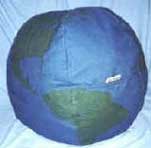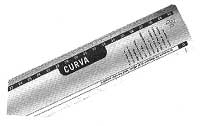Sustainable Design Awards Toolkit
Section 2.3 Reuse
Reuse of a product or of a component for its original purpose.
This has been done for many years with milk bottles � but why not for
plastic bottles? People often obtain their vehicle spares cheaply from
scrap dealers. However, people may feel uncomfortable buying a new car
knowing that the seat cushions had been used before. Designs incorporating
re-use therefore have to make sure the public will accept them.
Detergent companies carry out a widely accepted reuse programme. Consumers
can buy cheaper pouches of detergent to refill the original bottle.
 |
 |
Photocopiers are leased to customers and maintained by Xerox. When their
service is no longer required the products are taken back, refurbished
and hired (or resold) to customers for second, third and further uses.
Refurbished products pass through the same assembly line as new products
and are subject to the same stringent quality tests. The company is still
able to maintain control over the complete manufacture, distribution and
take-back of the product. When products cannot be refurbished, parts are
reused or materials recycled in new products.
Source: www.demi.org.uk
|
|
 |
 |
Charity shops are very successful at reuse. They collect and sell
unwanted items such as clothes, toys, gifts, books and furniture.
Source: www.wastewatch.co.uk
|
|
Secondary Use
Use of largely unaltered products for a purpose different than the first.
Two examples of 2nd year Industrial design and technology projects from Loughborough University.
� Loughborough University Department of Design and Technology, 1999
The students designed ways of transforming irreparable mail bags into new products:
 |
 |
Third World Mosquito net by Damian Blanchard, David Hagelthorn,
Mark Hirst and Christopher Mills
Bags could be stitched together using strips from a plucked bag and
made to provide protection against the biggest killers in Africa.
The bags could also be reused to fence in chickens or make partitions,
which would save wood.
|
|
 |
 |
The post jacket by James Partridge, Graham Randall, Lindsay Patmore
and James Whitehead.
The bags are used as insulation in jackets.
The product was designed so it could be used by the Royal Mail. This would
mean a market would not have to be found for the product.
|
|
 |
 |
The Earthchair is supplied as an empty sack, which the user
stuffs with plastic bags. This interactive approach to waste
helps communicate the environmental message to consumers.
Source: www.biothinking.com
|
|
 |
 |
Aluminium 'Curva' ruler, developed by the Dutch company De Denktank.
Made from the blade of a used and discarded aluminium blind. Blinds from
an aluminium tip are disassembled, cleaned, cut to shape and printed.
The ruler is indestructible and can measure curved contours. The reuse
extends the life cycle of aluminium, which is a very energy-intensive
material to extract from the earth.
Source: How to do EcoDesign? By Tischner et al
|
|
|
|
 
 |
Ecodesign Tools
|
 |
�
|
 |
Toolkit Index


|
|







